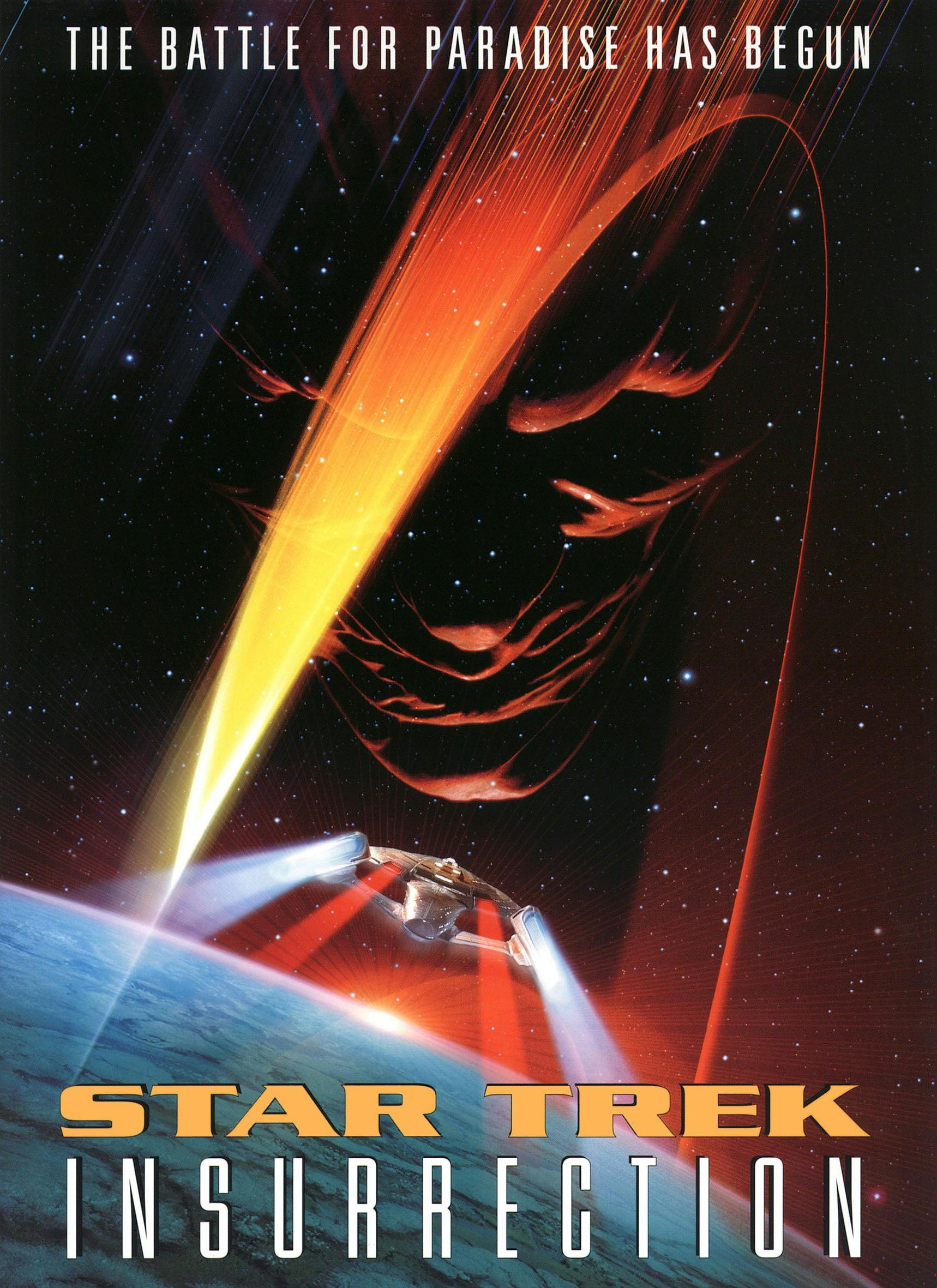Published Dec 11, 2021
How Star Trek: Insurrection Reflected Real World Conflicts
The crew of the Enterprise-E wound up exploring the deepest moral quandaries of the 90s.

StarTrek.com
As shows that delve into the complexities of international law go, Star Trek has never had much competition. There isn’t much appetite — even in the deepest recesses of streaming services — for exploring the finer points of the Geneva Conventions or nuclear weapons treaties. Trek, though, has always excelled at weaving the thread of international law through its universe. And, in the film Star Trek: Insurrection, it goes a step further, speaking not just to philosophical arguments of the moment but crafting a shrewd parallel to events that tested the moral compass of our world.The Next Generation series aired during a tumultuous period in world affairs, as the Soviet Union collapsed, equity and intolerance battled for prominence, and the long shadows of colonial rule started to recede. More than at any time since the Second World War, the balance of power was thrown out of alignment. The TNG finale aired in the midst of two particularly gruesome conflicts: the genocide in Rwanda and the breakup of Yugoslavia. Both conflicts tested the ability and willingness of the international community to act in the face of mass killing. The latter conflict, spanning four years, laid out the fragile, fractious nature of global cooperation—and laid bare the question of, as Picard puts it in Insurrection, whether global powers were righteous actors or mere “coward[s] without the moral courage to prevent an atrocity.”

StarTrek.com
The movie’s central plot revolves around a Federation alliance with the Son’a to remove the Ba’ku people from a planet rich in metaphasic radiation — a resource with anti-aging properties that could prove priceless for members of the Federation (or at least for everyone waiting around for Troi and Riker to get their acts together). Data goes rogue as part of an observation mission, accidentally warning the Ba’ku of the danger and dragging the Enterprise into the fray.
Picard then takes on the role (as he so often does in TNG) of the global conscience: “Some of the darkest chapters in the history of my world involve the forced relocation of a small group of people to satisfy the demands of a large one,” he reminds us. “I’d hoped that we had learned from our mistakes, but it seems that some of us haven’t.”
It’s precisely this argument that embodied the demand for action in Bosnia: the brutal campaign of forced relocation perpetuated mainly (though not exclusively) against Bosniak Muslims evoked memories of Nazi deportations and unkept promises of “never again.” As Picard asks the Starfleet Admiral rationalizing the So’na’s actions: “How many people does it take...before it becomes wrong? A thousand? Fifty thousand? A million?”
In Bosnia, the answer was eight thousand: eight thousand (mostly men and boys) murdered as United Nations peacekeepers looked on, while thousands more fled to the hills surrounding the UN-delcared “safe zone” of Srebrenica.
The most obvious parallel to the Bosnian conflict is easy enough to spot — the opposing parties in Insurrection are the Ba’ku and Son’a; the (primary) opposing parties in the Bosnian war, the Bosniaks and Serbs. And, like the Ba’ku and Son’a, Bosniaks and Serbs had been part of one society until ambitious, unprincipled leaders exposed old wounds to justify brutality. There is a certain universality to that story, though—what makes Insurrection so eerily reminiscent is the visual cues. There are chilling similarities to some of the most infamous scenes of the war: a stone bridge destroyed, Ba’ku running through a market square as phaser fire rains down, civilians being “sniped” by transporter beams as they flee their homes.
As the Ba’ku head for the mountains to escape violence raining down, a column of people wind their way up the mountain in a near-perfect recreation of Bosniak Muslims making the long trek out of Srebrenica.

StarTrek.com
Insurrection’s focus on intra-community conflict seems to stem from a need to address the human cost of war more fully than the series ever could in a forty-five minute. The Next Generation’s final season nods to awareness of the world’s ongoing crises, in “Gambit,” “Attached,” and “Homeward,” all of which grapple with the role of Starfleet and the dangers of xenophobia in some way. To a casual observer, Insurrection is not much different from the other voyages of the U.S.S. Enterprise, save the incredibly overdue manifestation of a Troi-Riker romance (civilizations literally died out waiting for them to get their acts together). But where the show has always been careful to reference Earth’s darker moments in oblique terms, Insurrection pulls from still-raw tragedy and grapples with the questions that tested the capacity of world governance. Like the United Nations in the 1990s, Insurrection lays bare the ethical fallibility of Federation of Planets, moving beyond a world of black-and-white moral dichotomies and utopian futures into an uncertain future.
Dana Sloane (she/her) works in the nonprofit sector on voting rights and collects action figures of her favorite female characters from television, then assigns them pretend Cabinet positions. You can tweet at her about how voting might work in deep space, why Nichelle Nichols is her hero, and which TNG episodes should be required viewing for international law courses via @telefeminism.

